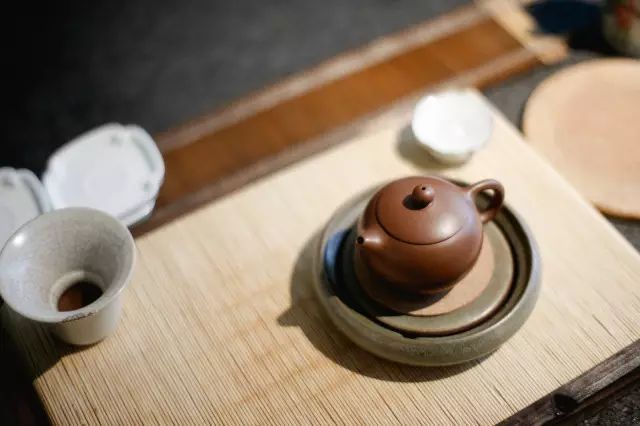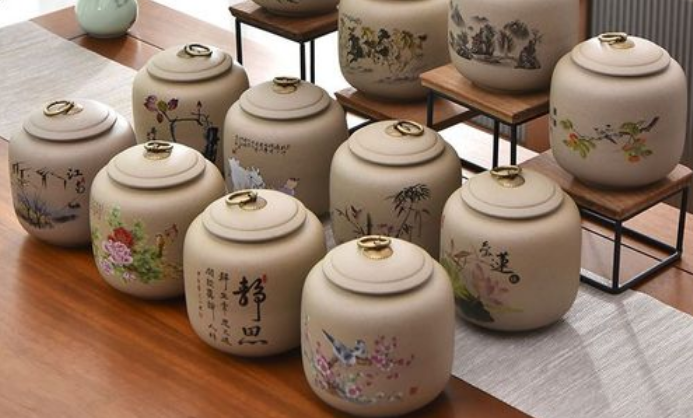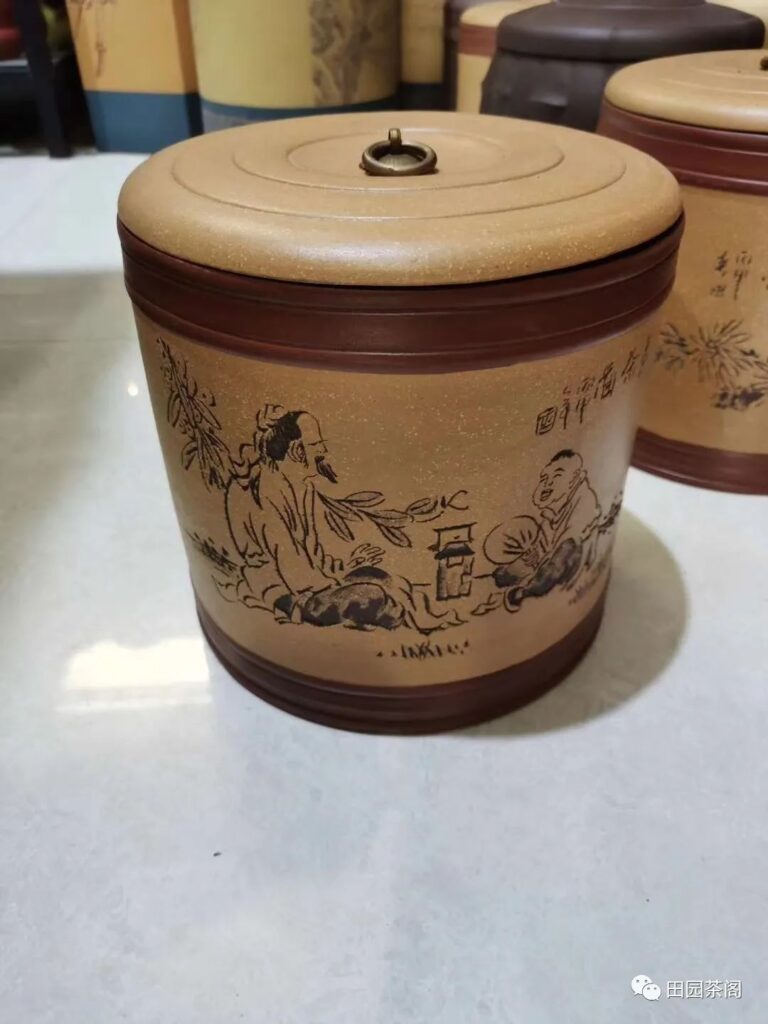When encountering good tea, tea lovers always buy some and store it at home. They can enjoy a cup of tea in their leisure time or make a pot when friends come… Then tea storage is a matter that requires great attention. If not stored properly, when making the tea again, you may find that the taste is completely different from the original. That would be a great pity. Next, we will introduce in detail how to store tea at home.
Understand the main factors of tea deterioration
01 Light
Light irradiation can accelerate various chemical reactions and have an adverse impact on tea storage. Therefore, tea should be stored in the dark.
02 Temperature
The higher the temperature, the faster the aging speed of tea. Experimental results show that for every 10-degree increase in temperature, the aging speed of tea accelerates by 3 – 5 times. If tea is stored in a cold storage below 10 degrees Celsius, the browning process can be better delayed.
03 Moisture
Moisture is a necessary condition for many chemical reactions during the tea aging process. Research results suggest that when the moisture content in tea is about 3%, the oxidation and deterioration of lipids can be effectively delayed. When the moisture content in tea exceeds 6%, the aging speed accelerates sharply.
04 Oxygen
Oxygen can combine with many chemical components in tea and cause oxidation and deterioration. For example, catechins, vitamin C, tea polyphenols, theaflavins, thearubigins, and esters in tea will all oxidize and deteriorate. Therefore, tea is best stored in isolation from oxygen.
The key points of tea storage
Prevent compression, moisture, seal, avoid light, and prevent strange odors. Usually, the aroma and taste of tea will change more or less after storage. However, if it is exposed to high temperature, high humidity, and sunlight at the same time, the tea will age and deteriorate in a short time.
Storage methods for the six major tea categories
Storage methods for other tea categories
Note: Different scented teas should be avoided being stored together because they will absorb each other’s scents, are easy to absorb strange odors, and confuse the original aroma.
Small tips for home tea storage
Tea has hygroscopic and strong adsorptive properties and is very easy to absorb moisture and strange odors in the air. If the storage method is slightly improper, the flavor will be lost in a short period. Here are several home tea storage rules for you.
01 Canning method
The canning method is one of the more common methods for home tea storage nowadays, mainly using iron cans, bamboo boxes, or wooden boxes, etc. If these cans or boxes are double-layered, the moisture-proof performance will be better. The iron can or box containing tea should be placed in a cool place to avoid moisture and direct sunlight. If the canned tea is not to be consumed temporarily, it can be sealed with transparent tape to prevent moist air from penetrating.
Applicable tea categories
• Black tea is easy to get damp or emit fragrance. It is better to store it in tin foil paper or tin foil cans.
• Oolong tea (semi-fermented tea) is relatively easy to store. There is nothing better than using a tin can to store tea. If not available, iron cans or porcelain cans are also good choices.
Specific Methods: First, place a thin plastic bag inside the can to maintain cleanliness. Each can may contain 1-2 small packets of silica gel to keep it dry. After sealing, store in a cool, dark place.
Tan Storage Method: The container used must be dry, odorless, and well-constructed. Common containers include ceramic pots and stainless steel barrels. It is important to note that tea should not be mixed for storage, as different tea fragrances are distinct and mixing them can lead to loss of their original characteristics. Applicable Tea Types: Yellow tea benefits from being stored in ceramic pots to maintain dryness. Specific Methods: Wrap tea in kraft paper or thicker paper. Place tea into the pot with lime packets in the middle, the size of which depends on the situation. Use cotton or thick paper at the pot’s mouth to reduce air circulation. After about a month, inspect and replace the lime if its color deepens. Bottle Storage Method: The vacuum flask has excellent light-blocking, temperature insulation, and air isolation properties. It is important to choose a good thermal insulation flask. Applicable Tea Types: Oolong tea is also a good choice for storage in a thermos flask, ensuring the lid is tightly sealed and the mouth is sealed with paraffin. Specific Methods: Load dry tea into the flask, ensuring it is full to avoid air space inside; tightly seal the flask with a stopper, and if sealed with wax, wrap with adhesive tape for better results. This mainly prevents air from entering the flask. Bag Storage Method: This is the most commonly used and one of the simplest and most economical methods for home tea storage. It is important that the plastic bags are food-grade, with high-density and high-strength bags being preferable. Pu-erh tea and white tea are not suitable for plastic bag sealing. Applicable Tea Types: Black tea and green tea can be packaged in plastic bags. Specific Methods: Package tea in soft paper or kraft paper, then place it into a plastic bag and tie it with a string. Refrigeration Method: Tea stored in warmer places is prone to faster oxidation or deterioration. Therefore, it is suitable to store tea in a cool place, which can slow down the rate of self-oxidation. Applicable Tea Types: Green tea is most suitable for storage in the refrigerator. Black tea, oolong tea, and pu-erh tea do not need to be stored in the refrigerator. This is because black tea and oolong tea have low levels of polyphenols, resulting in slower deterioration, making them easier to store. Pu-erh tea contains beneficial bacteria, and enzymes need to function in a ventilated, cool, and dry environment. White tea is durable and environmentally friendly in storage, requiring no low-temperature preservation, just normal temperature and odor protection.For optimal tea preservation, follow these specific methods:
1. Package the tea in small quantities and seal it in iron or tin containers.
2. Place the sealed containers in a plastic bag to prevent moisture and then store them in the refrigerator.
3. For short-term storage or frequent consumption, keep the tea in the refrigerator at a temperature of around 5°C.
4. If the tea is unopened and needs to be stored for over a year, it should be placed in the freezer.
5. To maximize the collection value of fine tea at home, it is essential to store it under the right conditions. Try the above methods to preserve your tea effectively.



